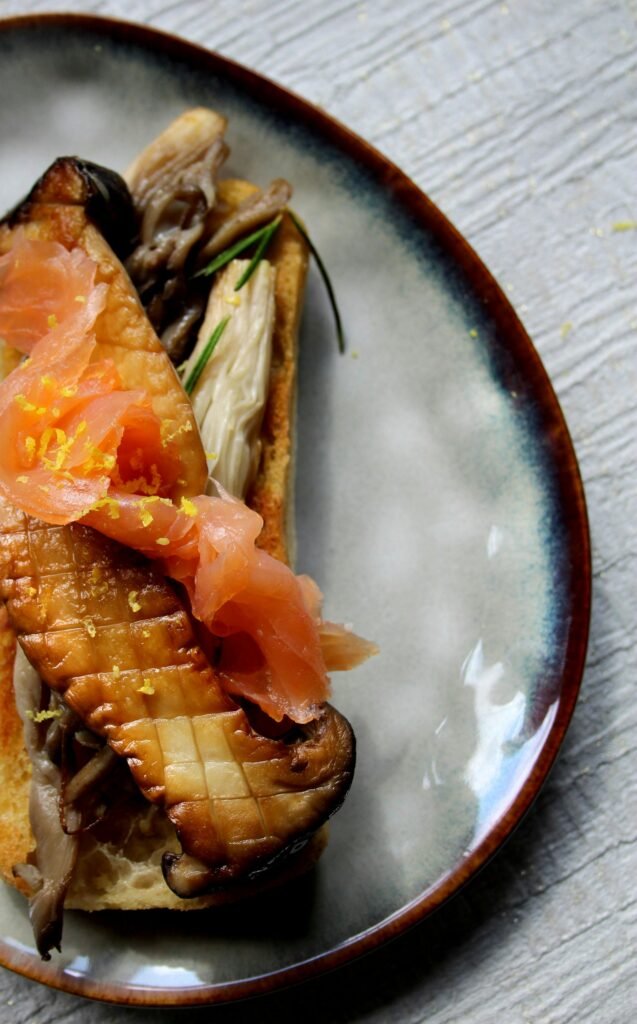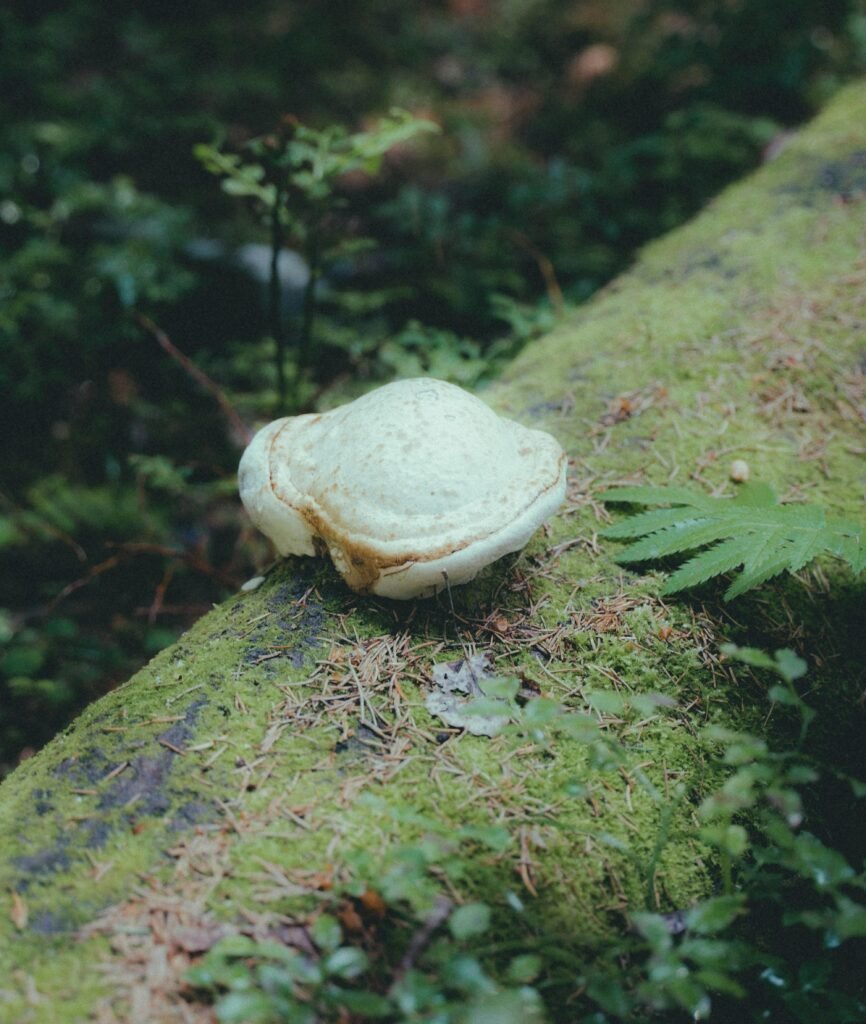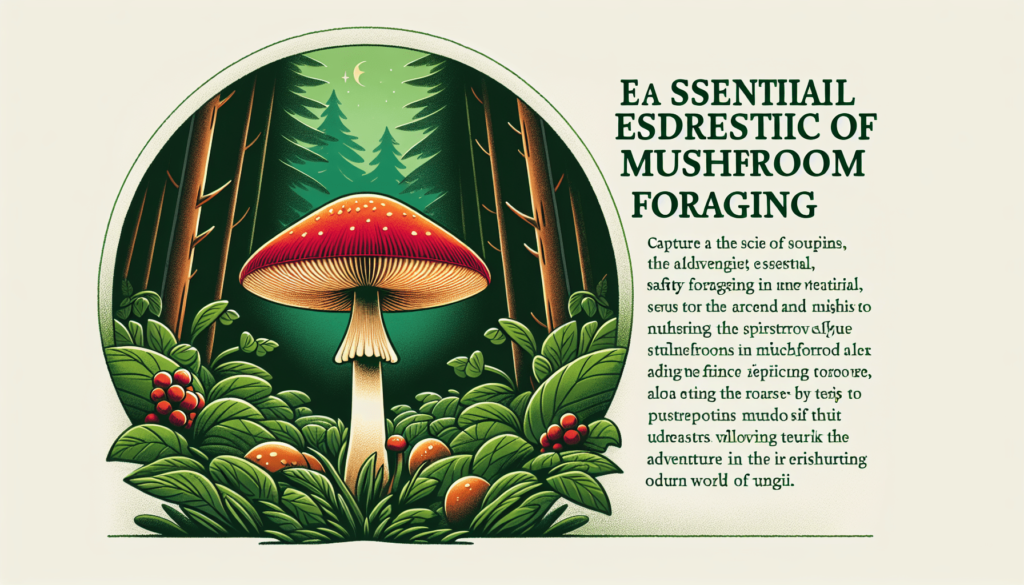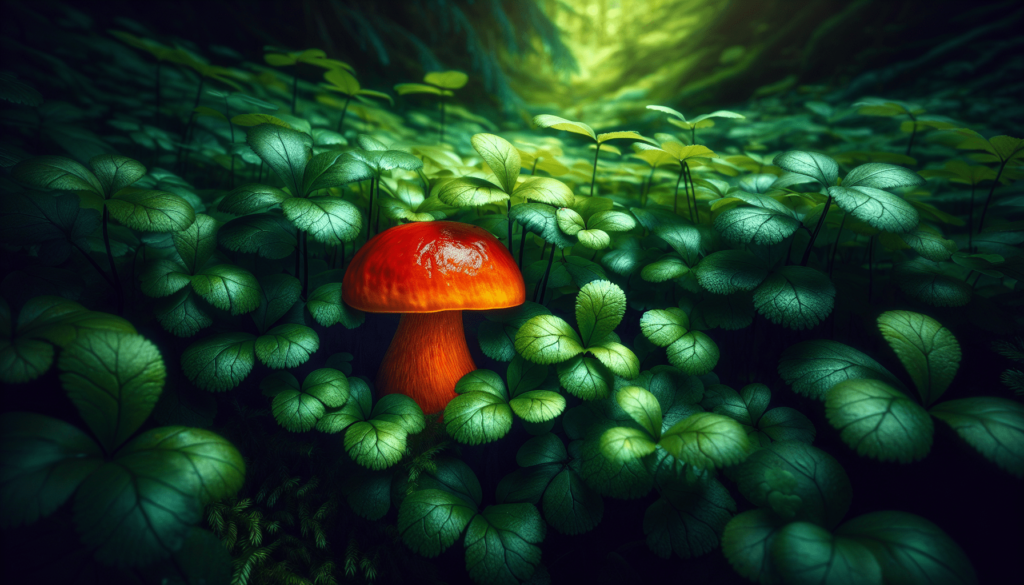If you’ve ever been curious about exploring the world of mushroom foraging, but aren’t sure where to start, this beginner’s guide is here to help. From essential safety tips to identifying wild mushrooms and avoiding poisonous varieties, this article provides all the information you need to embark on your fungi-finding adventure with confidence. Mushroom foraging can be a thrilling and rewarding experience, but it’s crucial to be well-informed and aware of potential risks. So, put on your walking shoes and prepare to discover the fascinating world of mushrooms in the great outdoors!

Understanding the Basics
Importance of Safety in Mushroom Foraging
When it comes to mushroom foraging, safety should always be your top priority. While the activity can be incredibly rewarding and enjoyable, it is essential to recognize the potential hazards and risks involved. By understanding and implementing safety practices, you can ensure a safe and enjoyable experience while exploring the fascinating world of mushrooms.
Benefits of Mushroom Foraging for Beginners
For beginners, mushroom foraging is not only an exciting hobby but also a fantastic opportunity to connect with nature and learn about the local ecosystem. It allows you to explore the outdoors, improve your knowledge of various mushroom species, and discover the many health benefits of edible mushrooms. Engaging in this activity can also provide a sense of accomplishment and fulfillment as you develop your skills in identifying and harvesting wild mushrooms.
Common Hazards and Risks in Mushroom Foraging
While mushroom foraging can be a rewarding experience, it is crucial to be aware of the potential hazards and risks involved. One of the main dangers is misidentification, which can lead to consuming poisonous or toxic mushrooms. Additionally, there is always a risk of encountering wildlife, hazardous terrain, and exposure to harsh weather conditions. By understanding and preparing for these hazards, you can ensure a safe foraging experience.
Educating Yourself
Researching Mushroom Varieties
Before embarking on your mushroom foraging journey, it is important to educate yourself about the various mushroom species in your area. This includes learning about their visual characteristics, habitat preferences, and toxicity levels. By familiarizing yourself with the different types of mushrooms, you can increase your chances of identifying edible varieties and avoid poisonous ones.
Expert Resources and Field Guides
A valuable resource for every mushroom forager is a reliable field guide or book written by experts in the field. These resources provide in-depth information about mushroom identification, common habitats, and key distinguishing features. By utilizing these tools, you can enhance your knowledge and confidence in identifying wild mushrooms accurately.
Joining Local Mushroom Foraging Groups
Joining local mushroom foraging groups or clubs is an excellent way to connect with experienced foragers and learn from their expertise. These groups often organize guided hikes, workshops, and foraging events, providing an opportunity to expand your knowledge and meet fellow enthusiasts. Engaging with a community of mushroom foragers can also help you build a network of resources and support as you continue to explore this hobby.
Mushroom Identification Training
To ensure accurate identification and reduce the risk of consuming toxic mushrooms, consider participating in mushroom identification training. These courses are often offered by reputable organizations or experienced foragers who have a deep understanding of mushroom identification. By investing time in training, you can develop the skills necessary to confidently identify a wide range of mushroom species.
Preparation and Equipment
Selecting Appropriate Clothing
Before heading out on a mushroom foraging excursion, it is important to dress appropriately. Choose clothing that is comfortable, weather-appropriate, and provides protection against ticks, thorns, and other potential hazards. Wearing long sleeves, pants, and sturdy footwear, such as hiking boots, can help safeguard against insect bites and injuries while navigating challenging terrains.
Essential Foraging Equipment
When going mushroom foraging, there are a few essential items you should have on hand. Firstly, a sturdy basket or foraging bag to collect your findings is essential, as it allows proper air circulation for your harvested mushrooms. Additionally, a small digging tool or knife is useful for carefully extracting mushrooms from the soil. Lastly, bringing along a small brush or soft cloth to clean dirt off mushrooms is recommended.
Safety Gear and First Aid Kit
While prevention is always the best approach, accidents can still happen. It’s important to be prepared by carrying safety gear and a basic first aid kit. Items such as a whistle, compass, headlamp, and a fully stocked first aid kit can be invaluable in emergencies. Remember to familiarize yourself with the contents of your first aid kit and know how to use them properly.
Safe Foraging Practices
Choosing Suitable Foraging Locations
Selecting appropriate foraging locations is essential for a safe and enjoyable experience. Opt for areas that are known for their diverse range of mushroom species and have a healthy natural ecosystem. Avoid areas near industrial sites, pesticide-treated fields, or locations with heavy pollution. National parks, forests, and nature reserves often offer ideal environments for mushroom foraging.
Obtaining Landowner Permissions
If you plan to forage on private property or designated land, it is crucial to obtain proper permissions from the landowner or relevant authorities. Always respect the boundaries and regulations set by landowners and never trespass without permission. Obtaining permissions ensures that you are foraging in a legal and ethical manner.
Respecting the Environment
Practicing good environmental stewardship while mushroom foraging is of utmost importance. Respect the natural environment by adhering to the principles of Leave No Trace. Avoid damaging plants, trees, or fungi during your search, and do not disturb wildlife habitats. By treating the environment with care and respect, you can help preserve the delicate ecosystem for future foragers.
Ensuring Seasonal and Local Regulations
Before setting off on your mushroom foraging adventure, familiarize yourself with any seasonal or local regulations. Each region may have specific rules concerning the collection of mushrooms, such as harvesting limits or protected species. Following these regulations ensures the sustainability of mushroom populations and contributes to maintaining a healthy ecosystem.

Identifying Wild Mushrooms
Visual Characteristics
When identifying wild mushrooms, visual characteristics play a crucial role. Pay attention to features such as color, shape, size, and cap texture. Take note of any distinctive patterns or markings, as they can be valuable clues in differentiating between species. It is important to remember that visually similar mushrooms can still have different toxicity levels, so further identification methods are necessary.
Spore Prints and Gills
Spore prints offer a reliable method for identifying mushrooms. Collect a mature mushroom and place its cap, gills facing down, on a piece of paper or glass overnight. The spores released will create a pattern and color on the paper, which can help narrow down the potential species. Additionally, examining the color, arrangement, and thickness of a mushroom’s gills can provide further insights into its identification.
Scent and Texture
The scent and texture of mushrooms can provide valuable clues in the identification process. While some mushrooms have a distinctive aroma, others may emit no scent at all. Pay attention to any unusual, pungent, or fruity smells, as they can be characteristic of certain species. Similarly, note whether the mushroom has a slimy, smooth, or rough texture, as this can be another distinguishing feature.
Common Edible Mushroom Species
For beginners, it is advisable to focus on learning a few common edible mushroom species. Some popular examples include the Chanterelle, Morel, Porcini, and Chicken of the Woods. By familiarizing yourself with these species, you can gain confidence in your identification skills and begin incorporating them into your culinary endeavors.
Avoiding Poisonous Mushrooms
Understanding Poisonous Species
Avoiding poisonous mushrooms is vital for your safety. Educate yourself about the toxic species in your area, especially those that closely resemble edible mushrooms. Some common poisonous mushrooms include the Death Cap, Destroying Angel, and Deadly Galerina. By studying their distinguishing features and toxicity effects, you can better avoid any dangerous encounters.
Distinguishing between Toxic and Edible Mushrooms
Distinguishing between toxic and edible mushrooms can be challenging, as there may be visual similarities between certain species. To mitigate the risk, it is crucial to use multiple identification methods, such as spore prints, scent, and texture. When in doubt, consult an expert or simply avoid consuming any mushroom that you cannot confidently identify as safe.
Common Deadly and Hallucinogenic Mushrooms
There are various deadly and hallucinogenic mushrooms that you should be cautious of. Deadly species, such as the Death Cap and Destroying Angel, can cause severe liver damage or even be fatal if ingested. Hallucinogenic mushrooms, such as Psilocybin mushrooms, can induce extreme altered states of consciousness and have mind-altering effects. Educating yourself about these species can help prevent any accidental consumption.
Double-checking Doubtful Specimens
When in doubt about the identification of a mushroom, it is always best to err on the side of caution. It is not worth risking your health by ingesting a potentially toxic species. If you come across a mushroom that you are uncertain about, consult an expert, or take detailed photographs for further analysis and identification. It is always better to be safe than sorry.

Avoiding Environmental Contaminants
Polluted Locations and Mushroom Absorption
Mushrooms have a unique ability to absorb and accumulate contaminants from their environment. For this reason, it is crucial to avoid foraging in polluted locations that may contain heavy metals, pesticides, or industrial waste. These contaminants can lead to serious health risks if consumed. Stick to clean, uncontaminated areas to ensure the safety of your mushroom harvest.
Avoiding Pesticide and Industrial Areas
Pesticide-treated areas and industrial sites are hotspots for environmental contaminants. These areas often contain harmful chemicals that can be absorbed by mushrooms and render them unsafe for consumption. Be diligent in researching and selecting your foraging locations to minimize the risk of contamination from these sources.
Contamination from Animal Waste
While mushrooms may grow in areas with animal waste, it is important to exercise caution. Animal waste can introduce harmful bacteria or parasites, which can contaminate the mushrooms. Avoid foraging in areas heavily frequented by wildlife or livestock, as the risk of contamination increases. When cleaning your harvest, be sure to carefully remove any visible dirt or debris.
Mushroom Foraging Etiquette
Respecting Private Property
Respecting private property is crucial when engaging in mushroom foraging. Always seek permission from landowners or obtain the necessary permits before entering private land. Trespassing not only disrupts ecosystems but also violates the rights of the landowners. By being respectful and seeking proper authorization, you can maintain positive relationships with landowners and ensure the sustainability of mushroom foraging in your area.
Leaving No Trace
Practicing Leave No Trace principles is paramount when foraging for mushrooms. Collect only what you can safely and responsibly consume or process. Avoid causing unnecessary damage to the environment, such as trampling vegetation or disrupting wildlife habitats. By leaving no trace, you contribute to the preservation and conservation of the natural environment for future generations.
Sharing Discoveries Responsibly
When you come across a bountiful mushroom patch, it can be tempting to collect as many mushrooms as possible. However, it is essential to exercise restraint and only take what you need. By leaving some mushrooms behind, you allow for spore distribution and ensure the sustainability of the local mushroom population. Share your knowledge and experiences responsibly with others, promoting the appreciation and conservation of mushrooms.
Contributing to Citizen Science Projects
Engaging in citizen science projects is an excellent way to contribute to the wider scientific community while mushroom foraging. Many organizations collect data on mushroom populations and biodiversity. By participating in these projects, you can assist in gathering valuable information that helps researchers and conservationists better understand and protect mushrooms and their habitats.

Proper Harvesting Techniques
Using a Knife or Scissors
When harvesting wild mushrooms, it is important to use proper techniques to preserve the health of the fungi and the ecosystem. Instead of pulling or twisting mushrooms out of the ground, use a sharp knife or scissors to cut the mushrooms at the base of the stem. This allows the mycelium, the crucial part of the mushroom hidden beneath the surface, to remain undisturbed and continue its growth.
Removing the Mushroom with Care
Take care not to damage the surrounding vegetation or disturb the habitat when removing mushrooms. Gently lift the mushroom from the ground, ensuring that the soil and any attached mycelium remain intact. Be mindful of your actions and handle the mushrooms with care to minimize any ecological impact.
Leaving Some Specimens for Spore Distribution
To promote the sustainability and growth of mushroom populations, it is essential to leave some specimens behind. By allowing mushrooms to release their spores, new fungi can germinate and continue the life cycle. As a responsible forager, aim to take no more than a quarter of the mushrooms in a given area, allowing nature to thrive and ensuring future foraging opportunities.
Post-Foraging Precautions
Cleaning and Storage Practices
After a successful foraging trip, proper cleaning and storage practices are essential to maintain the quality and safety of your harvested mushrooms. Remove any debris or dirt by gently brushing or wiping the mushrooms. As mushrooms can absorb water easily, it is advisable to avoid washing them unless necessary. Store the cleaned mushrooms in a paper bag or a breathable container to maintain freshness while allowing airflow.
Drying and Preserving Mushrooms
Drying mushrooms is a popular preservation method that allows you to enjoy your harvest for an extended period. Once cleaned, slice the mushrooms into even pieces and place them in a well-ventilated area. Allow the mushrooms to air dry completely before storing them in airtight containers. Alternatively, you can also preserve mushrooms by pickling, freezing, or canning them based on your preference and the species’ requirements.
Safe Cooking and Consumption
Before preparing your foraged mushrooms, double-check their identification and ensure they are safe for consumption. Cook mushrooms thoroughly before eating, as this helps eliminate any potential toxins or harmful bacteria. If you are trying a new mushroom species for the first time, it is advisable to start with a small quantity to gauge your body’s reaction. Remember, it is always better to be cautious and seek expert advice when in doubt.
Mushroom foraging can be an incredibly enriching and rewarding experience when approached with caution and a commitment to safety practices. By understanding the basics, educating yourself, and practicing responsible foraging techniques, you can embark on a journey that combines the joys of exploring the natural world with the delights of culinary exploration. Happy foraging!

